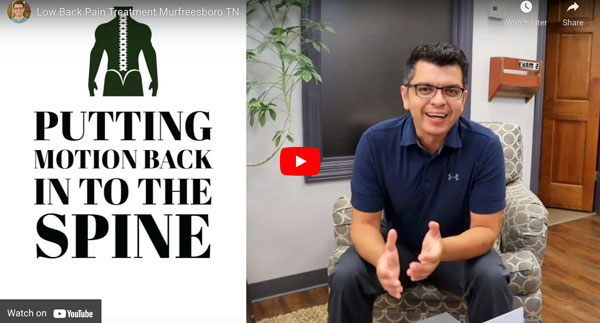
The Range of Motion in Your Spine
The range of motion (ROM) in your spine refers to how far your back can bend, twist, or move in different directions. It’s a measure of your spine’s flexibility and mobility, which is crucial for everyday activities like bending over, turning your head, and reaching for objects. Proper spinal range of motion also contributes significantly to overall comfort and quality of life.
Your spine is made up of individual bones called vertebrae, and the spaces between them allow for movement. A good range of motion in your spine helps reduce the risk of back pain and stiffness, enabling a more active lifestyle. Let’s explore how reduced spinal mobility impacts your life, the exercises that can improve it, and how chiropractic care can help.
Impacts of Reduced Spinal Range of Motion
When the range of motion in your spine decreases, it can lead to several issues:
Pain and Discomfort: Stiffness and aches can make everyday activities challenging.
Loss of Flexibility: Reduced mobility affects bending, twisting, and reaching motions.
Increased Risk of Injury: Limited movement may force other muscles to overcompensate, leading to strain.
Reduced Quality of Life: A stiff spine can hinder participation in physical activities and even disrupt rest.
Muscle Imbalances: Overworked and underused muscles can result in further complications.
3 Common Exercises to Increase Spinal Range of Motion
These simple exercises can improve spinal flexibility, reduce stiffness, and alleviate back pain. You’ll need a wobble cushion or an exercise ball for the best results.
1. Front-and-Back Exercise
How to Perform:
Sit or stand comfortably.
Gently arch your back, looking up at the ceiling.
Bring your shoulders closer together.
Reverse the motion by rounding your back and looking down at the floor.
Benefits: Improves spinal flexion and extension.
2. Side-to-Side Therapeutic Exercise
How to Perform:
Stand with your arms in front of you.
Tilt your upper body to one side.
Drop one hip while lifting the opposite ear toward the sky.
Repeat 15–20 times.
Benefits: Enhances lateral flexion and spinal flexibility.
3. Looking Over Shoulder Exercise
How to Perform:
Sit upright with a stable posture.
Clasp your hands together in front of your chest.
Keep your hips stable and turn your head to look over each shoulder.
Repeat 15–20 times in each direction.
Benefits: Increases spinal rotation and relieves tension.
For a guided demonstration, check out our spinal exercises video to ensure you maintain proper posture while performing these exercises.
How Chiropractic Care Can Help Increase Spinal ROM
While exercises are essential, expert help from a chiropractor can further enhance your spinal range of motion. At Revolution Chiropractic Murfreesboro, Dr. Oscar Noriega offers personalized treatments, including:
Spinal Adjustments: Realign your vertebrae for improved mobility.
Massage Therapy: Relieve tension and improve flexibility.
Spinal Decompression: Reduce pressure on spinal discs using advanced techniques.
Activator Methods: Provide precise adjustments to improve ROM.
Why Choose Chiropractic Care?
Chiropractic care addresses underlying issues affecting your spinal health, helping you:
Improve ability to bend over.
Enhance flexibility with targeted treatments.
Reduce inflammation and tension in your lower back.
To schedule an appointment, contact us at Revolution Chiropractic today!
FAQs About Spinal Range of Motion
What is the normal ROM of the spine?
The normal range of motion varies depending on the section of the spine:
Cervical Spine: 45° flexion, 45° extension, 45° lateral flexion, and 80° rotation.
Thoracic and Lumbar Spine: 90° flexion, 30° extension, 30° lateral flexion, and 30° rotation.
How do you test for the range of motion of the spine?
Testing for spinal ROM involves observing movements such as forward bending (flexion), backward bending (extension), side bending (lateral flexion), and twisting (rotation). Chiropractors often use tools like goniometers, inclinometers, or visual assessments.
What are the degrees of movement in the spine?
The spine moves in four main directions:
Flexion (forward bending): 90°
Extension (backward bending): 30°
Lateral flexion (side bending): 30°
Rotation (twisting): 30°
What are the six degrees of motion in the spine?
The spine’s six degrees of freedom include:
Flexion and Extension
Lateral Flexion (left and right)
Axial Rotation (twisting left and right)
How to Increase Range of Motion in spine with Chiropractic Care
Even though these exercises work well, you might still need expert help from a chiropractor to enhance your spinal range of motion. If you or someone you know is dealing with chronic back pain and needs professional guidance, consider visiting Murfreesboro Chiropractor, Dr. Oscar Noriega, at Revolution Chiropractic Murfreesboro. You can reach our Murfreesboro office while booking an appointment with us.
Chiropractic care can play a significant role in increasing spinal range of motion. Our treatments may include various approaches like massage therapy, spinal decompression, spinal adjustments, and activator methods, all aimed at improving your spine’s flexibility. Our goal is to help you enhance your quality of life through chiropractic care and alleviate the back pain you’re experiencing. Our team is here to help you to keep your life healthy and maintain a strong spine.
Watch Video To Get More Insights
Reviewed By


